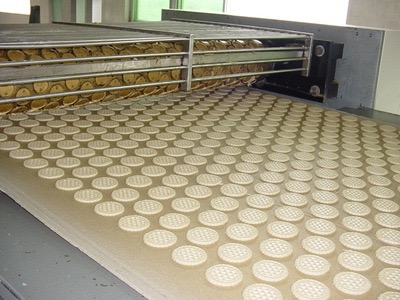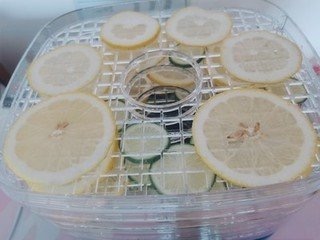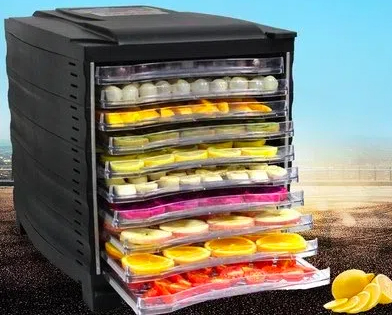
Content Menu
● Understanding Heat Pump Dryers
>> Advantages of Heat Pump Dryers
● Understanding Condenser Dryers
>> Advantages of Condenser Dryers
● Cost Comparison
>> Initial Purchase Price
>> Operating Costs
>> Long-Term Savings
● Performance Comparison
>> Drying Quality
>> Drying Time
>> Environmental Impact
● Additional Considerations for Food Drying
>> Space Requirements
>> Maintenance Needs
>> Product Type and Volume
>> Technological Advancements
● Conclusion
● Frequently Asked Questions
>> 1. What is the main difference between heat pump dryers and condenser dryers?
>> 2. Are heat pump dryers more energy-efficient than condenser dryers?
>> 3. Which type of dryer is better for preserving food quality?
>> 4. What is the typical lifespan of a heat pump dryer?
>> 5. Can I use a condenser dryer for drying fruits and vegetables?
Understanding Heat Pump Dryers
Heat pump dryers utilize a refrigeration cycle to extract moisture from food products. They work by circulating air through a heat exchanger, where the air is heated and then passed over the food. The moisture evaporates and is then condensed back into water, which is collected and removed. This process is energy-efficient and allows for precise temperature control, making it ideal for drying sensitive food items.

Advantages of Heat Pump Dryers
1. Energy Efficiency: Heat pump dryers are known for their low energy consumption. They can operate at lower temperatures, which helps preserve the nutritional value and flavor of the food.
2. Versatility: These dryers can handle a wide range of food products, from fruits and vegetables to meats and herbs. Their ability to maintain consistent temperatures makes them suitable for various drying applications.
3. Environmentally Friendly: By using less energy and reducing waste, heat pump dryers are a more sustainable option compared to traditional drying methods.
Understanding Condenser Dryers
Condenser dryers, on the other hand, operate by using a heating element to warm the air, which is then circulated through the drying chamber. The moisture in the air is condensed into water and collected in a tank. While they are effective for drying, they tend to consume more energy and may not be as efficient as heat pump dryers.
Advantages of Condenser Dryers
1. Lower Initial Cost: Condenser dryers are generally less expensive to purchase than heat pump dryers, making them an attractive option for businesses with limited budgets.
2. Simplicity: These dryers are often easier to operate and maintain, which can be beneficial for smaller operations or those new to food drying.
3. Faster Drying Times: In some cases, condenser dryers can achieve faster drying times due to their higher operating temperatures.
Cost Comparison
When comparing heat pump dryers and condenser dryers, it is essential to consider both the initial purchase price and the long-term operating costs.
Initial Purchase Price
Heat pump dryers typically have a higher upfront cost compared to condenser dryers. This is due to the advanced technology and components used in heat pump systems. For businesses looking to invest in a drying solution, the initial cost can be a significant factor.
Operating Costs
While heat pump dryers may have a higher initial cost, they often result in lower operating costs over time. Their energy efficiency means that they consume less electricity, leading to reduced utility bills. In contrast, condenser dryers, while cheaper to purchase, can lead to higher energy expenses due to their less efficient operation.
Long-Term Savings
When evaluating the total cost of ownership, heat pump dryers can provide significant long-term savings. Businesses that rely on drying processes can benefit from the reduced energy consumption and lower maintenance costs associated with heat pump technology.

Performance Comparison
In addition to cost, performance is a critical factor when choosing between heat pump and condenser dryers.
Drying Quality
Heat pump dryers excel in maintaining consistent temperatures, which is crucial for preserving the quality of food products. They minimize the risk of overheating, which can lead to nutrient loss and changes in flavor. Condenser dryers, while effective, may not provide the same level of temperature control.
Drying Time
Condenser dryers can sometimes achieve faster drying times due to their higher operating temperatures. However, this speed can come at the cost of quality. Heat pump dryers may take longer to dry food, but the end product is often superior in terms of taste and nutritional value.
Environmental Impact
Heat pump dryers are generally more environmentally friendly due to their lower energy consumption. As businesses increasingly focus on sustainability, this aspect can be a deciding factor in the choice of drying technology.
Additional Considerations for Food Drying
When selecting a dryer for food processing, several additional factors should be considered beyond just cost and performance.
Space Requirements
Heat pump dryers often require more space due to their design and the need for proper ventilation. Businesses should evaluate their available space and ensure that the chosen dryer fits comfortably within their facility. In contrast, condenser dryers may have a more compact design, making them suitable for smaller operations.
Maintenance Needs
Regular maintenance is essential for both types of dryers to ensure optimal performance. Heat pump dryers may require more specialized maintenance due to their complex systems, while condenser dryers might be easier to service. Understanding the maintenance requirements and costs associated with each type of dryer can help businesses make an informed decision.
Product Type and Volume
The type of food being dried and the volume of production are critical factors in choosing the right dryer. Heat pump dryers are often preferred for high-value products that require careful handling, such as herbs and delicate fruits. Conversely, condenser dryers may be suitable for larger volumes of less sensitive products, where speed is a priority.
Technological Advancements
As technology continues to evolve, new features and improvements are being integrated into both heat pump and condenser dryers. Businesses should stay informed about the latest advancements, such as automation, remote monitoring, and energy-saving technologies, which can enhance the efficiency and effectiveness of their drying processes.
Conclusion
In conclusion, both heat pump dryers and condenser dryers have their advantages and disadvantages. While heat pump dryers may have a higher initial cost, their energy efficiency and superior drying quality can lead to significant long-term savings. On the other hand, condenser dryers offer a lower upfront investment and simplicity, making them suitable for certain applications.
For food processing businesses, the choice between these two types of dryers will depend on their specific needs, budget, and long-term goals. As a manufacturer of food drying machines, we are committed to providing high-quality solutions that meet the diverse requirements of our clients.

Frequently Asked Questions
1. What is the main difference between heat pump dryers and condenser dryers?
The main difference lies in their drying technology. Heat pump dryers use a refrigeration cycle for moisture removal, while condenser dryers use heated air to achieve the same result.
2. Are heat pump dryers more energy-efficient than condenser dryers?
Yes, heat pump dryers are generally more energy-efficient, leading to lower operating costs over time.
3. Which type of dryer is better for preserving food quality?
Heat pump dryers are better for preserving food quality due to their ability to maintain consistent temperatures and reduce the risk of overheating.
4. What is the typical lifespan of a heat pump dryer?
Heat pump dryers can last anywhere from 10 to 15 years with proper maintenance.
5. Can I use a condenser dryer for drying fruits and vegetables?
Yes, condenser dryers can be used for drying fruits and vegetables, but heat pump dryers are often preferred for better quality results.












